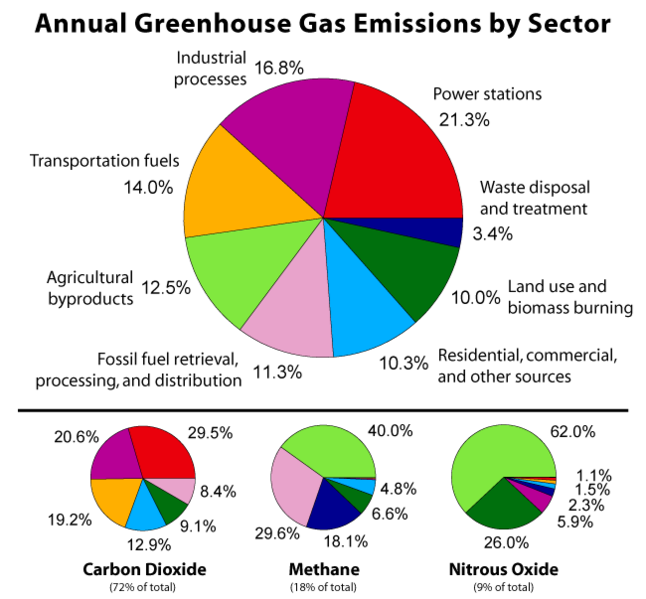The Human Activities That Cause Climate Change
Proximate causes are the human activities that directly cause climate change.
The human causes of climate change fall into two categories: proximate causes and driving forces.
Proximate causes are the human activities that directly cause climate change. There are two overarching categories of proximate causes: land transformation and industrial processes. People transform the land surface in many ways, with some important types being deforestation, agriculture, urbanization, mining, reservoir building, land draining, and transportation network building. Industrial processes include energy production, transportation, manufacturing, construction, waste disposal, petrochemical, mineral, and food processing, and many other activities. All of these activities change the flux of energy and mass to the climate system.
In other words, proximate causes are the emissions and the land use changes that occur because of human activity. We'll take a look at emissions by sector and the geography of emissions later in this unit. While the graphic below is a static image, if you click the link to its home on WRI's site, you'll find that it's part of an interactive tool they've created called the Climate Data Explorer. This allows you to drill down into a country's emissions profile and see what sectors and places are really most responsible for our changing climate. As you take a look at the image below, what do you notice?
- Which countries have the bigger pieces of the global emissions pie?
- Looking at any individual country, which sector or sectors are contributing the most to their emissions profiles?
There are two overarching categories of proximate causes: land transformation and industrial processes. People transform the land surface in many ways, with some important types being deforestation, agriculture, urbanization, and transportation network building. Industrial processes include energy production, transportation, manufacturing, waste disposal, and many other activities. Note that land transformation and industrial processes are not always distinct. For example, building a road transforms the land but requires powerful industrial equipment, mined materials, and processed chemicals. Once the road is built, vehicles traveling on it are manufactured using energy, petrochemicals, and mined materials, and are run by burning mined and processed petroleum products.
Human activities release GHGs to the atmosphere at unprecedented levels, trapping more of the longwave radiation for longer periods and forcing the surface temperature to rise. The gases most responsible for warming are three naturally occurring gases,carbon dioxide (CO2), methane (CH4), and nitrous oxide (N2O). The manufactured chemicals are collectively called the halocarbons and include chlorofluorocarbons (CFCs), hydrofluorocarbons (HFCs), perfluorocarbons (PFCs), and others. Focusing on the portion of warming caused by the natural gases released by human activity, carbon dioxide is responsible for 72 percent of the warming, methane for 18 percent, and nitrous oxide for 9 percent.

| Process | Percentage of gas emitted |
|---|---|
| Industrial processes | 16.8% |
| Power stations | 21.3% |
| Waste disposal and treatment | 3.4% |
| Land use and biomass burning | 10.0% |
| Residential, commercial, and other sources | 10.3% |
| Fossil fuel retrieval, processing, and distribution | 11.3% |
| Agricultural byproducts | 12.5% |
| Transportation fuels | 14.0% |
| Process | Percentage of gas emitted |
|---|---|
| Industrial processes | 20.6% |
| Power stations | 29.5% |
| Fossil fuel retrieval, processing, and distribution | 8.4% |
| Land use and biomass burning | 9.1% |
| Residential, commercial, and other uses | 12.9% |
| Transportation fuels | 19.2% |
| Process | Percentage of gas emitted |
|---|---|
| Agricultural byproducts | 40.0% |
| Residential, commercial, and other uses | 4.8% |
| Land use and biomass burning | 6.6% |
| Waste disposal and treatment | 18.1% |
| Fossil fuel retrieval, processing, and distribution | 29.6%< |
| Industrial processes | 0.9% |
| Process | Percentage of gas emitted |
|---|---|
| Agricultural byproducts | 62.0% |
| Power stations | 1.1% |
| Land use and biomass burning | 26.0% |
| Industrial processes | 5.9% |
| Waste disposal and treatment | 2.3% |
| Residential, commercial, and other uses | 1.5% |
| Transportation fuels | 1.2% |
